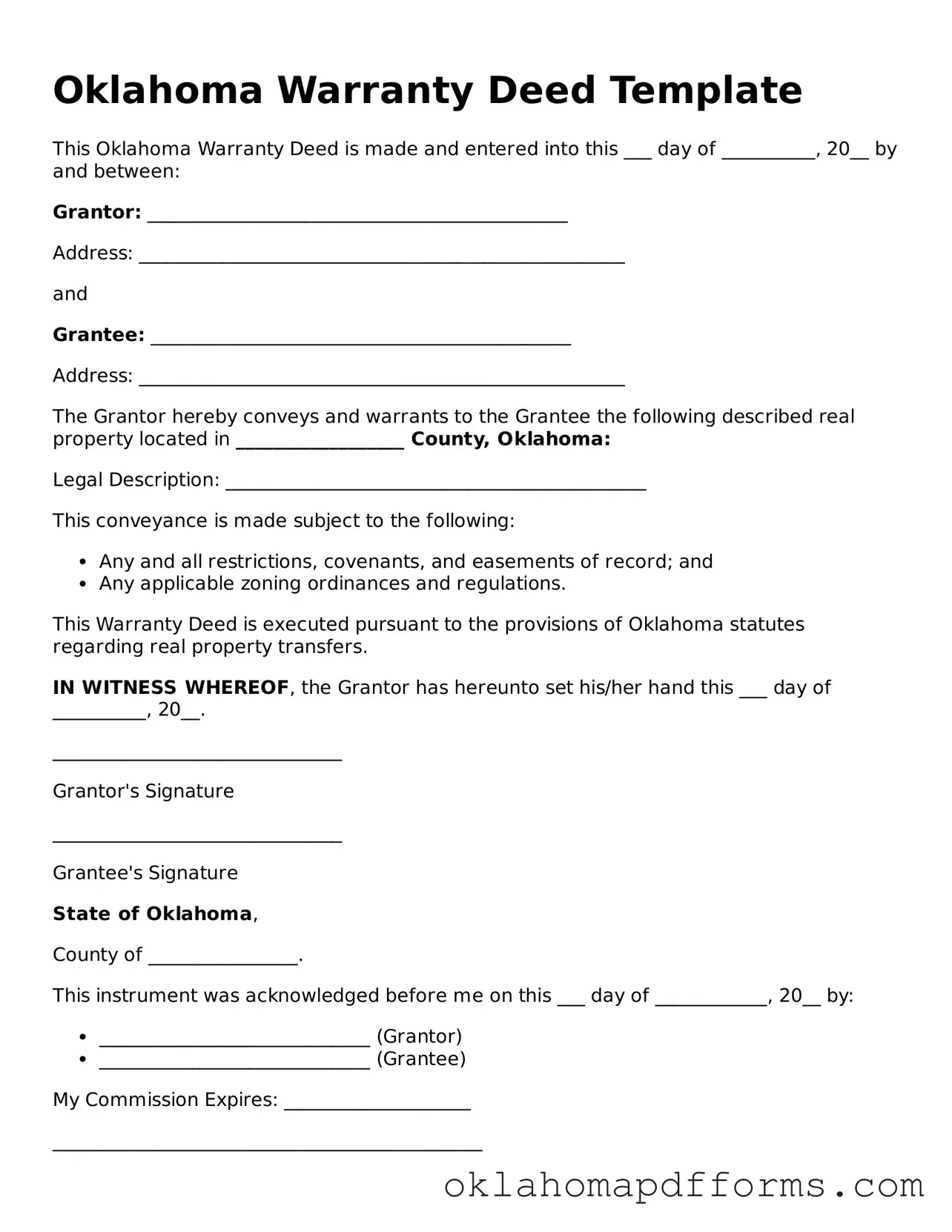What is an Oklahoma Deed form?
An Oklahoma Deed form is a legal document used to transfer ownership of real estate property in the state of Oklahoma. This form outlines the details of the transaction, including the parties involved, the property description, and any conditions of the transfer. It serves as an official record of the change in ownership and is typically filed with the county clerk's office.
What types of deeds are available in Oklahoma?
Oklahoma recognizes several types of deeds, including Warranty Deeds, Quitclaim Deeds, and Special Warranty Deeds. A Warranty Deed provides the highest level of protection to the buyer, ensuring that the seller holds clear title to the property. A Quitclaim Deed transfers whatever interest the seller has without any guarantees, while a Special Warranty Deed offers some assurances regarding the seller's ownership during their period of ownership only.
How do I complete an Oklahoma Deed form?
To complete an Oklahoma Deed form, gather the necessary information, including the names of the grantor (seller) and grantee (buyer), the legal description of the property, and any relevant details about the transaction. Fill out the form accurately, ensuring that all information is clear and legible. Once completed, both parties must sign the document in the presence of a notary public.
Do I need a notary to sign the Oklahoma Deed form?
Yes, in Oklahoma, the signatures on a Deed form must be notarized. This step is crucial, as it verifies the identity of the signers and confirms that they are signing the document voluntarily. Notarization helps prevent fraud and ensures the document is legally binding.
Is there a fee to file an Oklahoma Deed form?
Yes, there is typically a fee associated with filing an Oklahoma Deed form. The fee varies by county, so it is advisable to check with the local county clerk’s office for specific amounts. Additionally, there may be fees for obtaining certified copies of the deed after it has been recorded.
How do I record an Oklahoma Deed form?
To record an Oklahoma Deed form, you must submit the completed and notarized document to the county clerk’s office in the county where the property is located. The clerk will review the document for compliance with state laws and then officially record it. After recording, the deed becomes part of the public record.
What happens if I don’t record the Deed?
If you do not record the Deed, the transfer of ownership may not be recognized legally. This can lead to complications, especially if disputes arise regarding property ownership. Recording the Deed protects your interests and provides public notice of your ownership.
Can I use an Oklahoma Deed form for any type of property?
Yes, an Oklahoma Deed form can be used for various types of real estate, including residential, commercial, and agricultural properties. However, it is essential to ensure that the Deed is properly tailored to the specific type of transaction and complies with state laws.
What should I do if I make a mistake on the Deed form?
If you make a mistake on the Deed form, it is best to correct it before signing and notarizing the document. Depending on the nature of the error, you may need to create a new form. After recording, making changes can be more complicated and may require filing an amendment or correction deed.
Where can I find an Oklahoma Deed form?
You can find an Oklahoma Deed form at various sources, including online legal document services, local county clerk’s offices, or real estate attorneys. Ensure that the form you use is up-to-date and complies with Oklahoma state laws to avoid issues during the transfer process.
